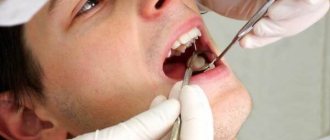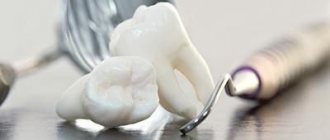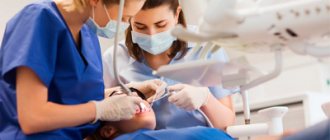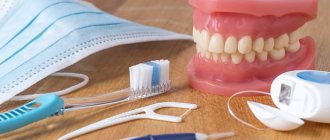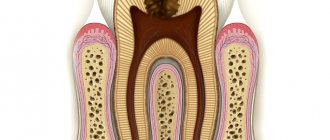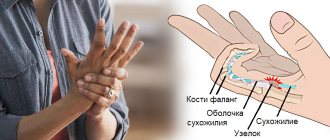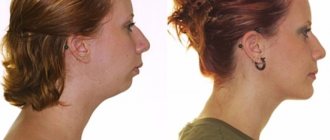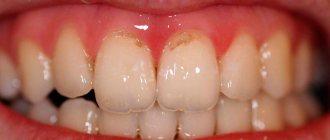Causes of necrosis Symptoms Classification Treatment Prevention
Necrosis of the jaw is a severe inflammatory disease in which the bones of the facial skeleton are exposed and die.
Cell death provokes:
- Radiation therapy
. Moreover, necrosis of the jaw bone can develop some time after the end of irradiation, which complicates diagnosis. - Taking synthetic drugs
. Drugs destroy osteoblasts, the basis of bone tissue. - Taking bisphosphonate drugs
. These drugs are prescribed for osteoporosis (in small doses) and cancer that affects the skeletal bones (long-term, in large doses). - Decreased immunity
as a result of diseases (rheumatism, blood diseases, polyarthritis, diabetes) or chemotherapy. - Infectious diseases
- general and oral. - injuries
.
Gum necrosis
Causes of necrosis
Types of gum necrosis and treatment
Symptoms of the disease
Diagnosis of the disease
Prevention of the development of gum necrosis
Gum necrosis (from the Greek nekros - dead) is the death of tissue that occurs due to cessation of blood circulation. This disease is difficult to detect at an early stage, as its symptoms are barely noticeable. Another danger is that this process is irreversible. Therefore, if the doctor has diagnosed gum necrosis, it is important to take appropriate measures as soon as possible to prevent the development of pathology. In this article we will look at the causes of necrosis, its types, and also tell you how to avoid it.
Necrosis of gum tissue: how dangerous it is, what causes it and how to treat the pathological process
Necrosis is the process of gradual death of cells and tissues, leading to the cessation of their functionality and cessation of vital activity. Such a pathological phenomenon can begin in almost any part of the human body. In dental practice, gum necrosis usually occurs when the mucosal tissue begins to die, which is due to the cessation of blood circulation in them. There are many potential causes for this pathological process. Today we’ll talk about what this phenomenon is, what its characteristic symptoms are and how to treat the problem.
Causes of necrosis
Table 1. Causes of gum structure destruction
| Causes of necrosis | How it manifests itself |
| Insufficient oral hygiene | Plaque forms, which leads to the development of gingivitis, periodontitis, and periodontal disease. |
| Injury to the gums due to malocclusion or ill-fitting dentures | This disrupts blood flow and blood circulation stops in certain segments. |
| Hormonal disbalance | During pregnancy, adolescence, with diseases of the endocrine system and blood. |
Sometimes the disease can occur due to prolonged exposure to cold, high temperatures or arsenic, which is part of the dental pastes used in root canal treatment. For example, if a temporary filling does not close the dental canal tightly, the paste can come out, causing tissue necrosis.
Possible reasons
Gum necrosis can be associated with various negative factors. The process of cell death is triggered by:
- chemical burns - doctor’s mistakes when killing the dental nerve with arsenic, treating gum fibromatosis using liquid nitrogen;
- prolonged exposure to low temperatures - applying ice to the gum after implantation and other dental procedures;
- chronic periodontitis is an inflammatory disease that affects all periodontal structures; in severe cases, soft tissues die;
- mechanical injuries of the gums - rubbing of the mucous membrane with a prosthesis, cuts with subsequent infection, jaw fractures, serious bruises;
- hormonal imbalances - pregnancy, age-related changes in the body, taking certain groups of medications;
- bad habits - smoking, use of narcotic and psychotropic substances.
To establish the cause of gum necrosis, it is necessary to undergo a comprehensive diagnosis. If the pathological process is not stopped, dangerous complications can arise. The most common include osteomyelitis of the jaw, sepsis, and loss of chewing function.
Types of gum necrosis and treatment
The treatment plan is developed individually for the patient and depends on the type of necrosis.
Table 2. Treatment plan depending on the type of anesthesia
| Type of gum necrosis | How to determine | Treatment |
| Dry | Dead areas dry out and decrease in volume. There are no signs of inflammation or intoxication. | The affected areas are removed, the surrounding tissues are treated with antiseptics. After the procedure, the doctor prescribes drug therapy. |
| Wet | It is considered the most dangerous form. Accompanied by swelling and increased hyperemia. | They open purulent foci, cut out dead tissue, dry the gums, and carry out antiseptic treatment of the oral cavity. After – drug therapy |
Once the necrotic process has stopped, bone grafting may be required to improve aesthetics.
Classification of the disease
Depending on the origin, necrosis of the jaw can be of the following types:
- odontogenic (develops as a result of dental disease);
- hematogenous (associated with the spread of infection through the bloodstream);
- traumatic (occurs as a result of direct trauma to the jaw).
According to the nature of the course, osteonecrosis can be acute, subacute or chronic. In most cases, it is preceded by dental disorders, including the formation of fistulas and gumboils.
Depending on the intensity of clinical manifestations, necrosis of the jaw can have several degrees of development:
- 1st degree: bone tissue is destroyed by 10%, while the functional abilities of the jaw are not impaired;
- 2nd degree: microcracks occur, severe pain appears, and restrictions in the movements of the maxillofacial area appear;
- 3rd degree: more than 50% of tissues are affected, pain is expressed, which is permanent;
- Grade 4: massive bone destruction requires urgent surgical intervention.
It is recommended to seek medical help at the initial stage of the disease, when it is possible to avoid traumatic operations and completely restore impaired functions.
Symptoms of jaw necrosis
The severity of clinical manifestations of jaw necrosis depends on the state of immunity and the severity of the disease. If the disease is preceded by acute osteomyelitis, then the body temperature rises sharply, chills, severe weakness and weakness, and sleep disturbance appear.
Additional signs of osteonecrosis of the jaw:
- pain in the area where the infected tooth is located, which intensifies with pressure;
- pathological mobility of teeth;
- swelling of the mucous membrane;
- the appearance of purulent discharge from the gum pockets;
- bad breath;
- enlargement of regional lymph nodes;
- when the focus of infiltration spreads, restrictions appear when opening the mouth, pain occurs during swallowing, and breathing may be impaired;
- decreased sensitivity of the soft tissues of the affected jaw, feeling of numbness and tingling;
- asymmetry of facial contours.
The main symptom of the disease is pain in the area of the affected tooth, which is the main source of infection. The pain syndrome tends to intensify, radiating to the area of the eyes, ear and head.
Over time, the diseased tooth becomes mobile, and pus begins to ooze from the gums. These alarming signs should force you to contact your dentist as soon as possible and undergo an appropriate examination.
Necrosis can have a subacute course, when there are no obvious signs of an acute infectious inflammatory process. In this case, the general condition of the patient may improve, suppuration disappears, but the mobility of the affected teeth increases.
In the destructive form of the disease, signs of intoxication predominate, and there is a significant enlargement of the lymph nodes located in the submandibular zone. Fistulas with purulent exudate may form. The chronic course of osteonecrosis is often the cause of a pathological fracture of the jaw, the formation of small sequesters and infiltrates.
A doctor can detect jaw necrosis based on the characteristic symptoms of the disease and changes in laboratory diagnostic parameters. The presence of infection is confirmed by an increase in the number of leukocytes and an increase in ESR in a general blood test. To assess the degree of damage to bone tissue and detect the exact location of the infection, X-ray examination methods are required.
Survey
In some people, necrosis of the jaw occurs for a long time without significant symptoms. The disease is often discovered by chance during a routine examination or examination.
Main diagnostic methods:
- radiography;
- biochemical blood test, general blood and urine analysis;
- bacteriological culture of discharge from a purulent focus.
On a hemogram with necrosis of the jaw, specialists detect neutrophilic leukocytosis, eosinopenia, and an increase in ESR. Based on the results of a biochemical blood test, one can suspect the development of the disease due to a large amount of C-reactive protein and hyperglobulinemia. Red blood cells, protein substances and casts are found in the urine.
Based on the results of X-ray or tomography of the jaw, it is possible to identify foci of sequestration, areas with coarse fibrous bone tissue, areas of osteosclerosis and uneven contours.
Necrosis requires differential diagnosis with osteomyelitis, periodontitis, periostitis, purulent cysts and tumors of the jaw. The effectiveness of the chosen treatment depends on the accuracy of the diagnosis.
Features of treatment
If you seek dental care in a timely manner, the prognosis for osteonecrosis of the jaw is favorable. It is important to determine the root cause of the disease in order to stop the action of infectious pathogens.
The dental surgeon must eliminate the primary purulent focus. In the case of an odontogenic form of the disease, it is necessary to remove the tooth; in a hematogenous form, it is necessary to sanitation the infection; in a traumatic form, primary surgical treatment of the wound must be performed.
Main measures for necrosis of the jaw:
- Opening any purulent formations, antiseptic treatment and prescribing antibiotics after an individual sensitivity test.
- Prescription of painkillers, anti-inflammatory drugs, agents that accelerate tissue regeneration.
- Detoxification measures include the prescription of medications that help remove poisons and toxic compounds from the body.
- Periostotomy is prescribed, pus is evacuated and bone tissue is washed with antiseptic solutions.
- After removing dead tissue, the dentist can strengthen the teeth with therapeutic splinting.
- Additionally, hyperbaric oxygenation, ultraviolet blood irradiation, plasmapheresis, and local physiotherapy, including the use of ultrasound and UHF, are prescribed.
- Chronic necrosis is an indication for removal of sequestered bone tissue fragments. After this, an antiseptic rinse is carried out and the bone is filled with special materials with antibiotics.
Treatment of necrosis is long and quite complex. It requires the use of specific medications. Therefore, it is not recommended to carry out therapeutic measures at home. Of the traditional methods, only decoctions and infusions of anti-inflammatory herbs can be used as a supplement to the main drug therapy.
Often necrosis of the jaw develops against the background of oncological lesions of the maxillofacial area. This requires additional consultation and collaboration between the dentist and the oncologist. In this case, surgical interventions cannot be avoided. But you shouldn’t waste time thinking and self-medicating.
Prognosis and prevention
Acute infectious lesions of bone tissue are always dangerous. But with timely treatment, severe complications can be avoided. If the course is unfavorable, the disease is complicated by meningitis, abscess of the brain, lung, sepsis and mediastinitis. Chronic osteonecrosis often ends in ankylosis of the TMJ, contractures, and pathological fractures of the jaw.
It is important to pay increased attention to the quality of oral care, regularly visit the dentist and, when the first signs of the disease appear, undergo comprehensive treatment.
Only a doctor can monitor the condition of the gums and teeth, detect the first signs of problems and take everything necessary to prevent secondary infection. To get a consultation
Symptoms of the disease
Signs of the disease differ depending on the stage.
Early.
The tissues are slightly affected, darkening of the enamel and pale gums may be observed.
Average
. Swelling of the interdental papillae, a gray coating forms on the mucous membrane, and bad breath appears.
Heavy.
Swelling of the gum tissue - it turns black and ulcers appear on it. Appetite disappears, body temperature rises to 39 C°.
Last
. The epithelium dies, severe pain is felt in the gums, the necks of the teeth are exposed, and the dental units become loose.
Osteonecrosis of the jaw: symptoms
At the initial stage, it is quite difficult to identify, since the symptoms are similar to those of other oral diseases. It is often asymptomatic in the first months and first appears when the immune system is weakened or when bone destruction begins. Main signs of the disease:
- pain in the infected tooth, aggravated by pressure;
- tooth mobility;
- swelling of the mucous membranes;
- the appearance of pus from gum pockets;
- bad breath;
- enlargement of regional lymph nodes;
- difficulty opening the mouth;
- pain while swallowing;
- breathing problems;
- decreased sensitivity of soft tissues, numbness and tingling in the affected area;
- facial asymmetry.
If you have a toothache, and the pain intensifies, radiates to the area of the eye, ear, head, if the tooth has become mobile, and pus is released from the gums, then you should immediately consult a dentist.
Diagnosis of gum necrosis
Often the problem is identified during an examination by a dentist, without any complaints from the patient. In some cases, symptoms are present: pain, bleeding, flushing, bad breath.
Other signs of the disease may include:
- swelling of the mucous membrane;
- digestive problems;
- problems with swallowing;
- deterioration of health.
During diagnosis, the doctor does an X-ray examination and conducts an instrumental examination. The image allows not only to identify the necrotic process, but also to determine the stage, possible complications, etc.
Symptoms of receding gums
The condition in which the gums recede may be accompanied by other symptoms. Depending on the extent of the pathological process, recession is observed in a limited area, one side or the entire jaw. As a result, the neck of the tooth may be exposed, and with severe loss, part of the root.
This cannot but be accompanied by increased sensitivity of the teeth - increased susceptibility to hot and cold, sour, sweet foods and even mechanical stress. This symptom leads to difficulties while eating.
It is important to understand that some symptoms may indicate concomitant pathologies. So, if recession is observed against the background of whitish, pale gums, we can talk about periodontal disease. Bleeding and red gums often develop with periodontitis and gingivitis.
What will happen if left untreated?
Lack of timely treatment for gum recession can be fraught with more than just aesthetic problems. If there is a gap between the gum and the tooth, food debris and plaque get into it, and this can cause an inflammatory process. As the tissues become thinner and sagging, the following consequences of recession may appear:
- Hyperesthesia, or increased tooth sensitivity, difficulty chewing.
- High risks of caries development, and in the least protected and more vulnerable areas - in the area of the exposed necks of the teeth. At the same time, carious lesions in this area proceed faster and are more quickly complicated by pulpitis and periodontitis due to a thinner layer of enamel.
- Increased risk of developing a non-carious lesion - a wedge-shaped defect.
- High risks of inflammation, swelling of the gums, and the formation of periodontal pockets.
- An increase in the amount of plaque at the roots, which further aggravates the condition.
Complications can result in serious consequences such as loosening and loss of teeth.
Diagnostic methods
If the gum is moving away from the tooth, it is important to see a doctor as soon as possible: in the early stages, recession is faster and easier to treat. Diagnosis involves collecting anamnesis, analysis of symptoms and complaints, examination and instrumental examination if necessary. During the examination, the doctor will assess the width and nature of the gum damage. A periodontal probe can be used for diagnosis - it is inserted into the periodontal pocket to assess the depth of the lesion.
An assessment of the degree of gum damage is calculated by calculating the recession index using the following formula: the number of affected teeth is divided by the total number of teeth and multiplied by 100%. This is how the severity of the disease is determined: less than 25% is a mild recession, 26-50% is moderate, and from 50% is severe.
For diagnostics, a microscope is used, and binocular magnifying glasses are used. The thoroughness of diagnostic measures allows you to accurately select an effective treatment method. In addition, before starting treatment, it is very important to find out the causes of the disease: to determine whether recession is an independent disease or a symptom of another pathology.
Therefore, differential diagnosis with other periodontal diseases in which the gums rise is necessary. To do this, the doctor may prescribe a targeted or panoramic X-ray to assess the condition of bone tissue and detect hidden concomitant diseases.
Prevention of the development of gum necrosis
Interventions are often based on maintaining oral health and preventing dental diseases.
- Regular teeth cleaning and professional hygiene.
- Quitting bad habits (smoking, alcohol).
- Timely correction of the bite to prevent trauma to the mucous membrane and accumulation of dental plaque.
- Balanced diet, taking vitamins if necessary.
- Timely treatment of diseases of teeth and gums, gastrointestinal tract, endocrine diseases, etc.
After treating necrosis, it is important to prevent its reappearance. Proper oral care and mandatory visits to the dentist once every six months will help with this.
Causes of the disease
Necrosis of the jaw is in one way or another associated with the penetration of infections into the oral cavity - and most often this occurs due to untreated dental diseases (caries, granulomas, pulpitis, periodontitis, and so on). The most common route of infection is through the tissue of the affected dental pulp. However, besides this, there are other reasons that cause the breakdown of bone tissue:
- damage to the body by pathogens of infectious diseases (staphylococci, streptococci, E. coli, and so on);
- disruptions in the functioning of the circulatory and immune systems;
- lack of quality home hygiene;
- formation of massive tartar;
- long-term use of steroid hormones;
- oral injuries with infection and complications of burn disease;
- purulent otitis media, tonsillitis and other complicated ENT diseases;
- poisoning with toxins (for example, arsenic);
- diabetes mellitus and other pathologies of the endocrine system;
- abuse of nicotine and alcohol.
Necrosis of the palate after anesthesia
Local anesthesia is used during most dental procedures. But the anesthesia procedure itself may be associated with potential complications such as tissue necrosis, infection, trismus, prolonged pain, needle fracture, and paresthesia.
The palate area is often the location of many soft tissue lesions due to the specific nature of its rich vascularization. On the other hand, a huge number of large and small vessels allow the palate to heal faster and maintain a stable shape, despite local irritants.
When performing anesthesia in the palate, the physician must consider the influence of many factors, especially in patients who are taking medications aimed at minimizing the effect of bone loss due to osteoporosis or various forms of malignancy. Such drugs are bisphosphonates, which affect the process of bone remodeling by inhibiting osteoclast activity, but can also cause local circulatory problems. Changes in blood vessel activity are also observed in patients with diabetes and in patients undergoing radiation therapy. Spontaneous necrosis in the palate can be caused by bacterial, fungal or viral infections. During anesthesia, trauma from a needle or anesthetic solution can cause swelling of the surrounding tissue, which in turn can lead to reactivation of the latent virus.
Clinical case
The patient came to the dental clinic due to acute pain in the area of the right upper incisor. The tooth was very mobile and there was significant swelling on the vestibular side (photo 1).
Photo 1
Medical records indicated that the patient had undergone restorations and ceramic crowns approximately 40 days ago (Figure 2). Considering the presence of pain and severe tooth mobility, it was inappropriate to conduct a tooth vitality test.
Photo 2
Photos 3 and 4 showed significant bone loss. In order to check the vitality of the tooth, the tooth was prepared through the crown from the palatal side. During this manipulation, the patient immediately responded to the intervention, which indicated that the tooth remained vital (photo 5). The radiograph showed signs of bone tissue destruction on the palatal side, but the presence of unaffected bone areas was also noted in the periapical region. Further analysis of the medical history revealed that the patient had received multiple anesthetic injections in the palate.
Photo 3 - 5
During the analysis of CBCT sections (photos 6-7), it was possible to visualize the bone defect on the palatal and vestibular sides while maintaining healthy bone tissue in the periapical zone.
Photo 6
Photo 7
In cases of bone necrosis, it is recommended to avoid further manipulations and ensure that the infectious process is stopped in order to stop the progressive destruction of the bone. The patient was advised to take Dalacin C 300 mg twice daily and Metronidazole 500 mg twice daily for ten days.
The patient was observed for five days, during which it was noted that the tooth became more stable and the vestibular swelling decreased. After two weeks, the tooth was completely stabilized. A month later, the patient reported strange sensations in the palate: as if something was coming out of the soft tissue of the palate (photo 8). Under microscopic control, the presence of necrotic bone tissue, which was rejected, was visualized. The problem area was carefully cleaned, and the sequestered bone was removed piece by piece (Photo 9). After this, the intervention area was washed with chlorhexidine.
Photo 8
Photo 9
In total, it took about 45 days for the tooth to achieve complete stabilization. After this, the stability of this unit of the dentition was reconfirmed. On radiographs after 6 months, signs of bone tissue restoration in the area of the defect were visualized (photos 10-11).
Photo 10
Photo 11
Conclusion
Soft tissues in the palate are more sensitive to various local complications. Changes in the structure of the palatal mucosa can be caused by ischemia, osmotic pressure, physical pressure during injection, the irritant effect of vasoconstrictors, and even needle trauma. Typically, the structure of anesthetics uses the vasoconstrictor epinephrine at a concentration of 1:50,000-1:200,000, which reduces the systemic toxicity of anesthetics and increases the duration of anesthesia. Large concentrations of vasoconstrictor 1:50,000 with frequent injection of anesthetic into the same area can cause certain complications. By stimulating vascular receptors, vasoconstrictors can cause prolonged ischemia, which, in turn, can provoke the development of a trophic ulcer at the injection site. Necrosis of bone tissue as a result of anesthesia can be associated with the influence of many systemic and local factors: diabetes, which complicates the tissue healing process; bacterial infections, malnutrition, poor oral hygiene. All this can provoke not only bone sequestration, but even tooth loss. Viral infections such as chickenpox, the causative agent of which is located in the dorsal roots and ganglia of the cranial nerves, can disrupt the innervation of the periosteum, which, in turn, changes its blood supply and leads to necrosis. Taking systemic drugs, such as bisphosphonates, affects bone remodeling by inhibiting osteoclastic activity, while also changing the blood supply to the jaw bone.
Necrosis of bone tissue is also possible, caused by the effect of radiotherapy, as a result of which the tissues become hypovascularized, suffer from a decrease in cell size and hypoxia. These changes are especially critical for the lower jaw compared to the upper jaw.
Treatment of osteonecrosis is carried out using antibiotics such as penicillin and metronidazole, with mandatory mechanical cleaning of sequestered areas and washing of affected areas with antibacterial solutions. Also, patients with osteonecrosis are recommended to improve nutrition, increase the level of oral hygiene and carry out complete sanitation.
In order to minimize the risk of complications associated with the anesthesia procedure, it is recommended:
- Ensure slow deposition of local anesthetic without excessive pressure;
- Take into account the specific anatomy of the palate;
- Consider the dose of anesthetic administered;
- Do not perform multiple injections in the same place during one procedure.
Authors: Drs Pamela Kassabian, Valerie Batrouni, Edgard Jabbour, Philippe Sleiman (Lebanon)
Features of treatment of gum recession
There are conservative and surgical methods, with the help of which it is possible to cope with the problem relatively quickly. The development of a treatment program is always individual and takes into account the severity, causes of prolapse, prevalence of pathology and other conditions.
The first step is always professional teeth cleaning. It is necessary to remove soft and hard dental plaque. Sometimes subgingival tartar is removed, which already makes it possible to reduce the depth of periodontal pockets, and in combination with other methods, cope with the problem completely or achieve a significant improvement.
Drug treatment can solve several problems at once:
- eliminate or prevent gum inflammation;
- strengthen gums;
- improve blood circulation;
- speed up recovery processes;
- activate the growth of mucosal cells and gum tissue.
For this, vitamin therapy, anti-inflammatory drugs and local antibiotics, self-absorbing membranes, etc. can be used. The doctor may prescribe medicinal baths, rinsing with certain solutions or application of drugs to the gums, including at home.
Preparations that activate recovery processes are also widely used: products based on hyaluronic acid, regenerating gels with growth factors. The launch of natural regeneration processes allows you to literally “grow” the gum in the place where it subsides.
Another conservative method is the use of the patient's own blood plasma enriched with platelets. This method is called plasma lifting, or APRF technology. Injections into the gums can be used, as well as special membranes that are placed under the gums, but as part of a surgical intervention. This allows you to quickly restore tissue and improve cell nutrition.
As for other surgical treatments for receding gums, the most common are:
- Flap surgery - gum recession is closed with a gum flap, which the doctor takes from the patient's own tissue located nearby. Intervention is performed when the gum defect is minor and there is a sufficient amount of surrounding tissue that can be used.
- Transplantation of a graft from the hard palate/tuberculum of the upper jaw. In this case, part of the gum or a flap of connective tissue is taken from the donor sites and planted in the defect area. Can be used for all types of recession.
- Combined method: the movement of gum tissue is combined with the collection of tissue from the hard palate. The combination of approaches makes it possible to obtain high aesthetic results and close deep recessions. However, if gum loss is more than 5 mm, multiple interventions may be required.
Closure of gum recession is performed on an outpatient basis under local anesthesia. The choice of type of operation is determined by the condition of periodontal tissues and diagnostic results. All surgical methods are often combined with curettage - cleaning the space under the gum and removing subgingival deposits, and are also supplemented with growth activators.
